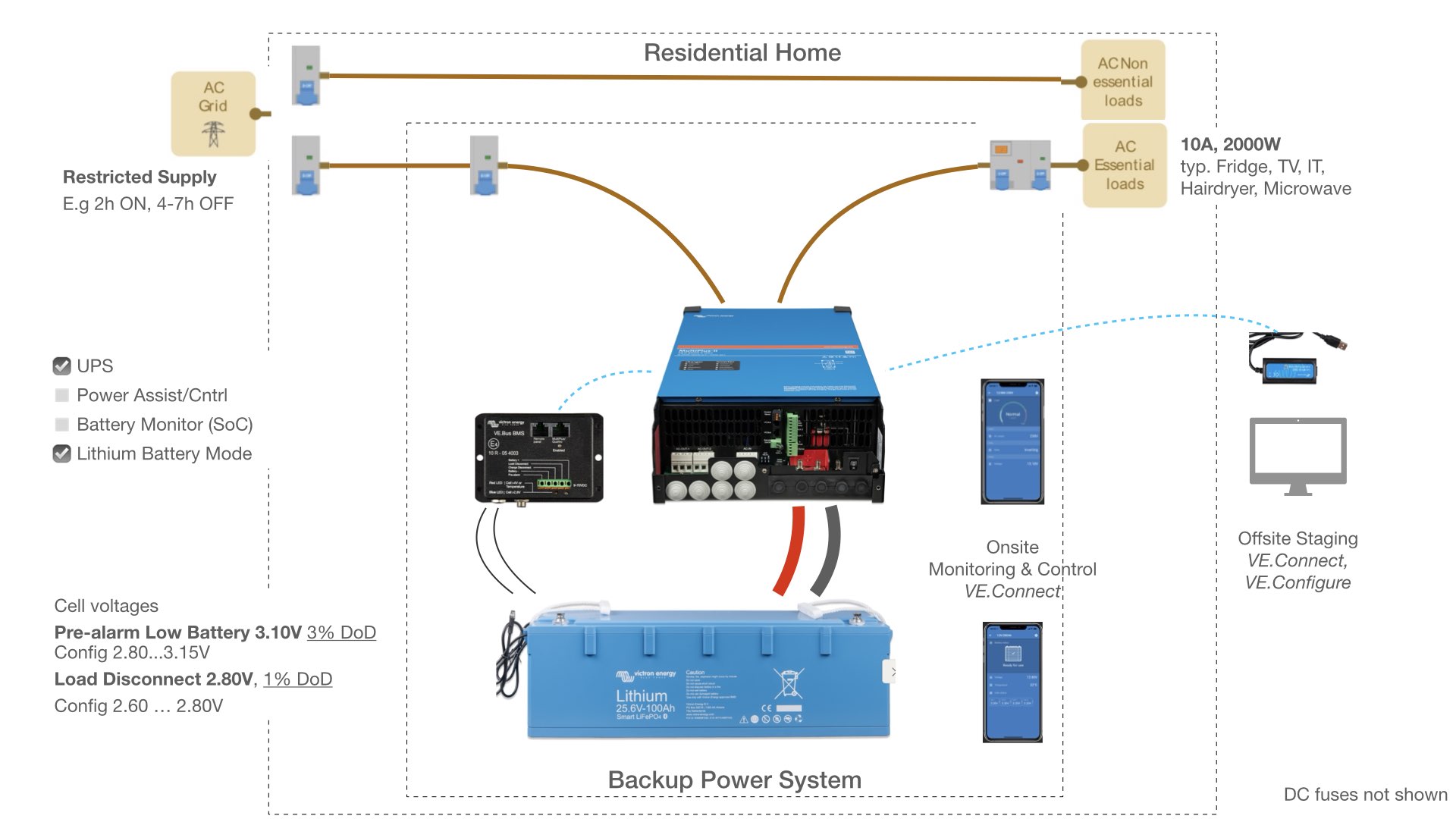 Lean Backup Power System for Ukraine Homes (draft)
Lean Backup Power System for Ukraine Homes (draft)
Dear All
I‘m designing a Victron Energy backup (my first one) for homes in Ukraine. System shall be simple and robust, for largely unattended operation. Must expect heavy duty cycles: Fast charging the battery when grid available (2h), deep cycle battery power usage meanwhile (7h). Need system self-protection: Finding active outlets, some users may just draw power down to the limits, unaware of appliance power ratings, and no time to bother about status panels. Folks are forced to pick other priorities these days.
So what can be done in a lean system in absence of a decent SoC control loop (see drawing) to protect expensive LFP battery against frequent 1% DoD‘s and pre-mature aging ?
A- Can MultiPlus-II be setup somehow to shutdown inverter already on Low Battery Pre-alarm from LFP/BMS (cell voltages = close coupling) ? When set to 3.15V it might keep LFP at least above a 3-5% DoD floor.
A1- Setup via VE.Connect/Configure (couldn‘t find means) ? Eventually thru a (new) Assistant ?
A2- Wire BMS Pre-alarm signal to a programmable Multiplus-II terminal (K1, AUX), and assign some logic/assistant ? But would have to coexist with VE.Bus controls …
B- Wire BMS Pre-alarm signal to a AC-OUT relay to disconnect the AC Essential Loads ? But then how to avoid toggling ?
C- Play with MultiPlus-II DC Input Low settings (battery voltages = loose coupling) ?
D- Other means ….
Thanks in advance for any contribution

